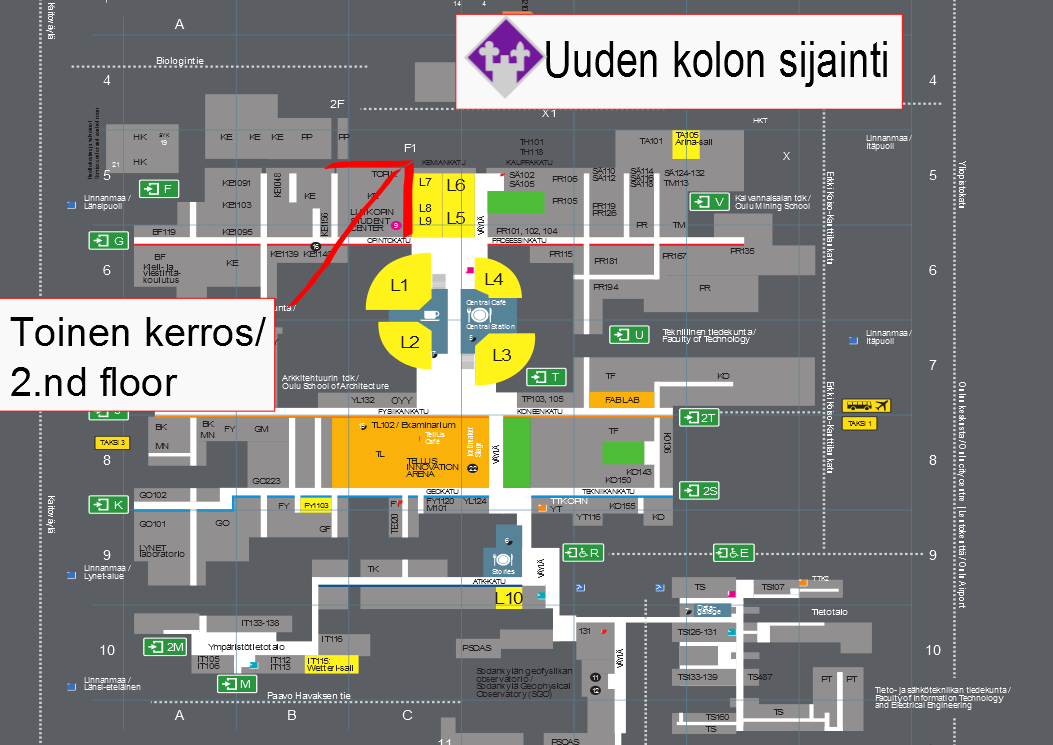SOOPA Winter Hike is organized every year at New Year’s time. Every other year we head in the direction of Kilpisjärvi and every second year to Saariselkä. The places have been chosen on the basis that they both have plenty of wilderness huts for a large groups. The characteristics of winter hiking usually includes fairly short days of skiing and spending the evening in tents and huts. There are not many hours of sunlight per day, so we try to use it as efficiently as possible for skiing.
Skiing will be done in independent groups of 4-8 people. Most participants sign up without peers or friends so SOOPA divides participants into groups according to fitness level, experience and wishes. The groups themselves plan the route according to their fitness and skill levels and also plan the food. The groups can use the wilderness huts if there is room, and they will also sleep in a tent for a few nights. Winter hiking is often fun, but it’s inevitably cold and miserable from time to time. The purpose of SOOPA’s winter hikes is to bring together winter hikers. The hikes are organized by volunteers, and there are no outdoor guides. However, all groups include more experienced hikers. Each participant is responsible for himself and also a responsible part of the group.
You shouldn’t go on a ski hike in bad shape, it’s neither fun nor comfortable. Various injuries are also likely to occur. However, no top fitness is required. Normal basic fitness is enough for a ski hike. If you can walk 10-15 kilometers without carrying a load and 10 km with a 25 kg backpack, then your fitness is sufficient. You also need some basic outdoor skills such as being able to keep yourself warm, dry and fed and hydrated while hiking, as well as being able to read a map and use a compass. In addition to these, you should have experience(s) of staying in a tent in the cold and snow, and at least basic skiing skills.
Most groups eat breakfast and dinner in a tent or wilderness hut. Lunch is often made into a thermos bottle and eaten during a ski trip. It is common for the group to split into cooking pairs that cook together. When it comes to lunch, we operate in such a way that the food is in one thermos bottle and the water/drink in the other. Some groups prepare breakfast and dinner for the whole group and divide into food pairs only for lunch.
Drinking water is very important on a winter hike and it can easily be forgotten. Even if you don’t sweat, a lot of liquid evaporates, e.g. along with breathing air. It’s a good idea to carry a water bottle under your jacket, so it stays liquid better and is easily accessible. In addition, drinks should also be carried in a thermos bottle. When in the wilderness hut, you should always boil everyone’s thermos bottles full of water. In addition, it is also a good idea to fill the pots and buckets so that water is always available to everyone (remember to empty the water bucket when you leave the hut). In the terrain, water is obtained either from openings or by melting snow, and when camping, melting water is often a continuous process.
There is a hiking meeting before the hike. Its purpose is for group members to meet each other and plan their route. At the same time, dining practices and carriers of common equipment are decided. It is definitely worth coming to the meeting! Maps of the hiking area are always available.
We go on the hike by chartered bus. More detailed instructions on packing are given with each hike. The goal is to fit more than 40 people’s belongings into a small trunk. In general, the bindings are removed from the skis, the skis and poles are tied into a package and the items are arranged on the bus according to the instructions. Inside the bus, you should take what you need during the trip and a change clothes for the return trip. On the way back, we visit the sauna and eat dinner. Both are included in the hiking fee. You can leave your belongings on the bus for the duration of the hike, so you don’t have to carry spare clothes, sauna suits, etc. the whole way. Remember not to leave bus anything that will damage when they freeze!
Participants are always sent an email with more detailed information about the arrangements for the hike. You should read the message carefully and if you have any questions, you can always contact the organizers.
The list is not the last word, but you can also deviate from it. However, don’t leave anything out unless you really know you don’t need it. If necessary, ask your own group leader, hike organizers or other experienced winter hikers for help. If it says that the item is essential, it means that the item is necessary, and without it there is no entry to the hike. Those hikers who have forgotten essential equipment have cried, stayed up all night, frozen, wounded, or all of these at the same time.
The gear you need on a hike.




